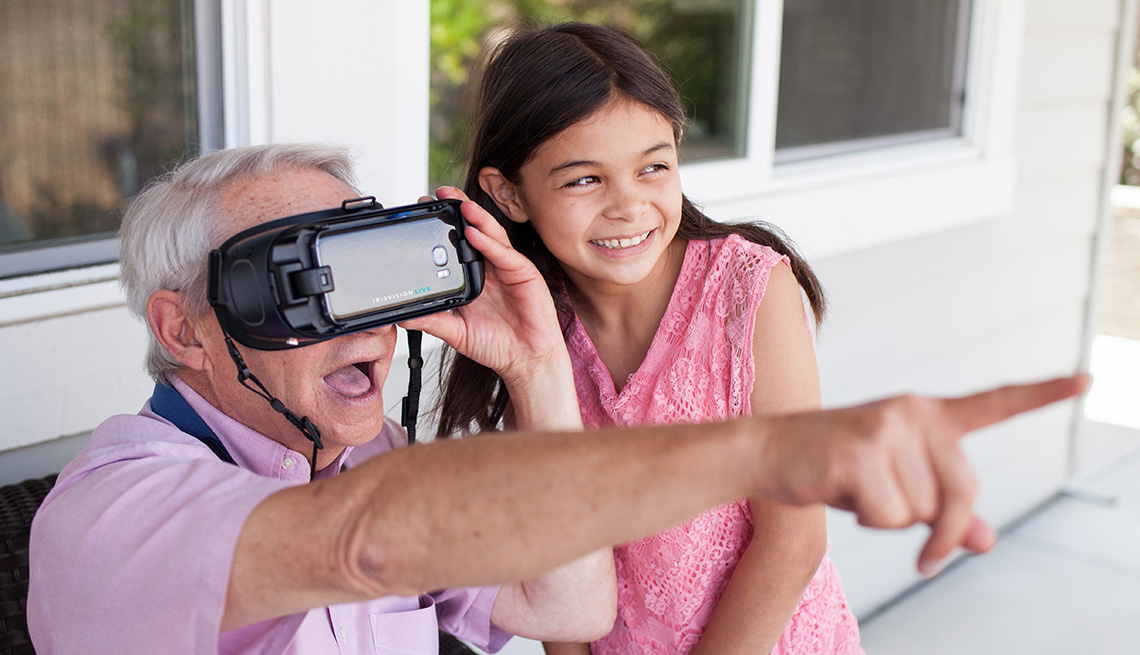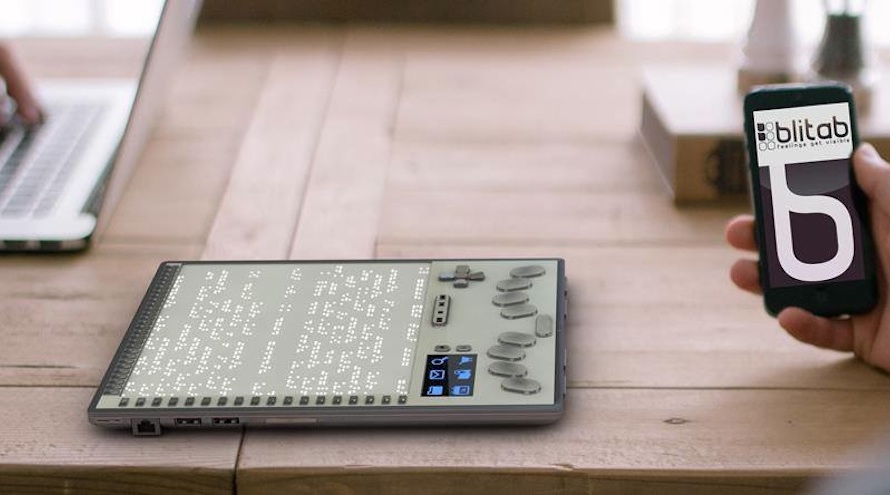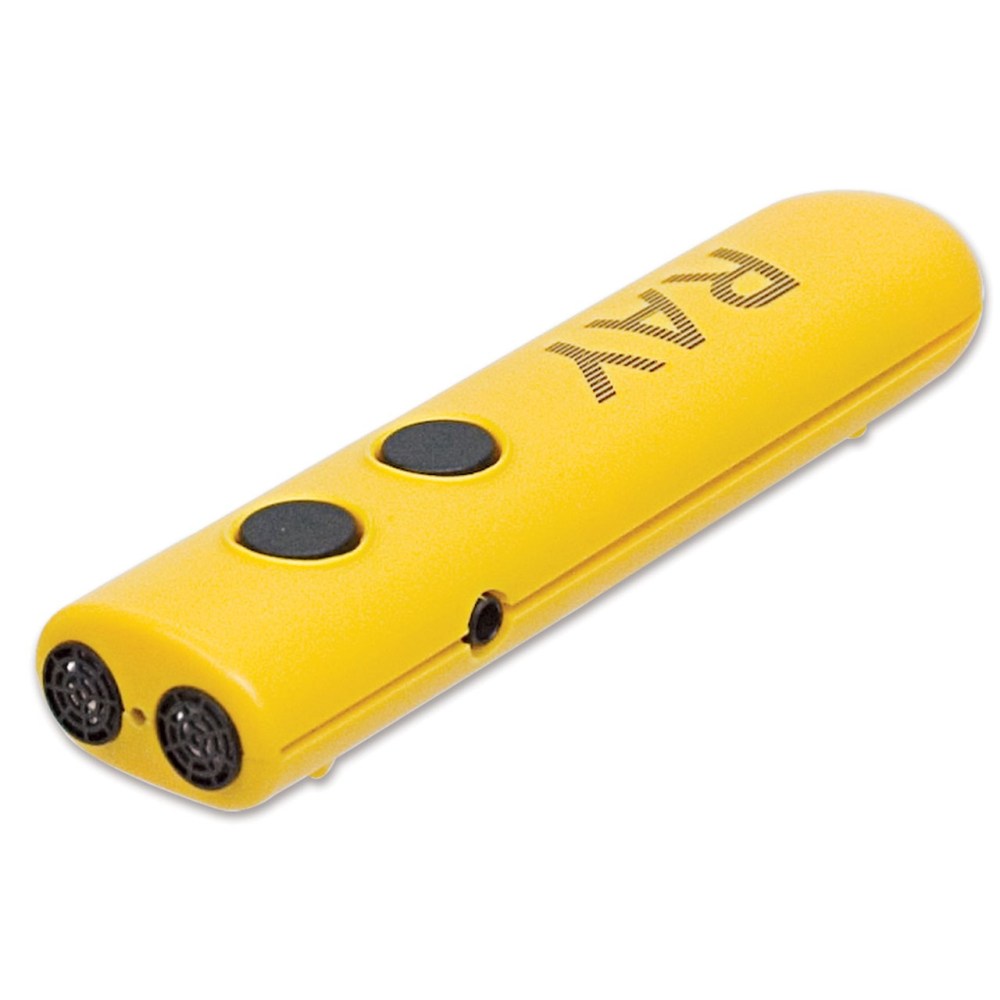Enhance Accessibility with Braille Displays and Notetakers
Wiki Article
Discover Innovative Tools Designed for the Aesthetically Damaged
The advancement of innovative devices for the visually impaired stands for a considerable advancement in access and independence. Technologies such as wise glasses with AI abilities and mobile applications designed to give acoustic descriptions are reshaping daily experiences for users. Furthermore, wearable gadgets that employ haptic responses enhance ecological understanding, while modern-day Braille technologies supply new ways to engage with message. As these devices continue to develop, their effect on the lives of those with aesthetic disabilities elevates essential inquiries about the future of inclusivity and freedom in different facets of life. What lies ahead in this technical landscape?Smart Glasses for Navigating

Smart glasses made for navigating are changing the way aesthetically impaired people connect with their setting. These innovative devices utilize a mix of video camera modern technology, artificial knowledge, and acoustic responses to give real-time information about surroundings. By utilizing obstacle discovery systems, smart glasses can notify users to prospective dangers, making it possible for more secure flexibility in both unfamiliar and familiar settings.
The combination of GPS innovation additionally enhances navigating capacities, enabling individuals to get acoustic directions as they move. This hands-free approach not just cultivates freedom however likewise encourages aesthetically damaged individuals to navigate urban landscapes with boosted confidence. Furthermore, numerous smart glasses are equipped with features that recognize spots and street indicators, offering contextual info that enhances the customer experience.
Additionally, the development of these devices is continuously advancing, with firms working to improve the precision of things recognition and expand the range of navigational attributes. As wise glasses come to be much more affordable and obtainable, they hold the possible to dramatically change daily life for visually damaged customers. Ultimately, these innovative devices stand for a crucial action toward inclusivity, offering enhanced wheelchair and a greater feeling of freedom for people browsing the world around them.

Mobile Apps for Daily Living
Just how can mobile applications improve the lives of aesthetically impaired people? Mobile applications are reinventing the way aesthetically damaged individuals navigate their atmospheres, manage day-to-day tasks, and gain access to details. These applications supply necessary support with different performances, cultivating independence and improving lifestyle.Numerous ingenious mobile apps are developed particularly for daily living. Applications like Be My Eyes attach aesthetically damaged individuals with sighted volunteers via video calls, permitting them to obtain real-time aid with tasks such as reading tags or browsing strange areas. In A Similar Way, Seeing AI, created by Microsoft, uses expert system to explain surroundings, read message, and identify things, properly changing a mobile phone right into a powerful device for everyday support.
Additionally, navigating applications customized for the visually impaired, such as Aira and BlindSquare, use audio-based instructions and environmental info, enabling customers to traverse their surroundings safely and with confidence. Beyond navigation and instant help, mobile apps additionally support organization and job administration, with features that aid users set pointers, develop order of business, and track consultations. In summary, mobile applications offer as important resources, empowering aesthetically impaired individuals to lead more independent and meeting lives.
Wearable Technologies for Support
Empowerment via modern technology is progressively evident in the realm of wearable tools developed to help aesthetically damaged individuals. These innovative tools incorporate seamlessly into every day life, boosting navigation and supplying crucial feedback to individuals. Wise glasses equipped with cams can acknowledge faces and check out message aloud, allowing individuals to communicate even check that more with confidence in social and specialist settings.An additional significant innovation is using haptic responses systems in wearable gadgets. These systems make use of vibrations or other responsive signals to share information regarding the individual's atmosphere, such as obstacles or adjustments in surface, boosting movement and security. Wearable innovations also include wristbands that connect to smartphones, signaling individuals to notifications with subtle resonances, therefore boosting connectivity without dependence on aesthetic signs.
As these innovations remain to develop, they are not just improving freedom for visually damaged individuals yet additionally promoting a better feeling of incorporation in culture. By linking the void between difficulties faced in daily living and the possibility for autonomy, wearable technologies work as crucial devices in the mission for equality and empowerment for those with visual impairments.
Sound Summary Tools
Sound description tools play a vital function in enhancing access for aesthetically damaged individuals, supplying them with the ability to engage with aesthetic media. Mobility aids for visually impaired users. These devices offer narrated summaries of crucial visual elements in movies, television shows, and live performances, making sure that customers can fully understand the context and feelings conveyed through visualsAudio summary can be incorporated into different platforms, consisting of streaming services, movie theater testings, and live cinema. Numerous popular streaming services now include audio summary as an ease of access attribute, enabling customers to pick it easily. Along with traditional media, specialized apps additionally exist, giving audio summaries for art events, galleries, and various other social occasions.
The effectiveness of audio description pivots on the skill of the narrators, who must communicate aesthetic details succinctly without interfering with the original audio. Advancements in this area are also leading the way for even more personalized experiences, where individuals can change the level of detail and pacing according to their preferences.
Braille Innovations and Tools
Braille advancements and gadgets have significantly changed the method aesthetically impaired people connect with text and info. Modern developments have actually led to the advancement of flexible tools that enhance proficiency and independence amongst customers. Notably, Braille display innovations have progressed, permitting dynamic analysis experiences. These devices transform digital message into Braille, making it possible for users to access a vast variety of information on computer systems, smartphones, and tablets.
In addition, mobile Braille notetakers integrate typical Braille input with contemporary performances, assisting in note-taking, organizing, and file editing and enhancing on the go. Speech-to-text devices for low vision. These portable gadgets often include text-to-speech capacities, connecting the gap between Braille and acoustic details
Additionally, cutting-edge Braille printers have actually arised, enabling customers to generate Braille labels, records, and educational materials successfully. This accessibility cultivates greater engagement in expert and educational settings, ultimately promoting inclusivity.
Additionally, research right into wise Braille technologies remains to expand. Instruments that incorporate artificial intelligence are being checked out to offer real-time navigation support and contextual info, boosting the individual experience in varied setups. Overall, these developments mirror a dedication to empowering aesthetically impaired people via technology, ensuring they can quickly accessibility and engage with the globe around them.

Conclusion
The development of innovative devices for the visually impaired considerably improves self-reliance and high quality check my reference of life. Smart glasses, mobile applications, wearable innovations, audio description devices, and Braille technologies collectively encourage individuals by giving necessary navigation assistance, ecological recognition, and enhanced reading experiences. These innovations not only foster better addition but also advertise freedom in everyday activities, ultimately adding to a much more fair and obtainable society for visually impaired individuals. Proceeded advancement in this area holds pledge for further improvements.As clever glasses come to be a lot more accessible and budget friendly, they hold the potential to substantially change day-to-day life for aesthetically damaged users. Mobile apps are revolutionizing the method aesthetically damaged users browse their environments, handle everyday jobs, and gain access to info. Applications like Be My Eyes attach visually damaged customers with sighted volunteers through video clip telephone calls, enabling them to get real-time aid with jobs such as checking out tags or navigating unfamiliar spaces.In addition, navigating apps tailored for the aesthetically impaired, such as Aira and BlindSquare, provide audio-based directions and buy glasses ecological details, making it possible for individuals to traverse their environments securely and with confidence.The advancement of ingenious tools for the visually damaged significantly enhances self-reliance and high quality of life.
Report this wiki page